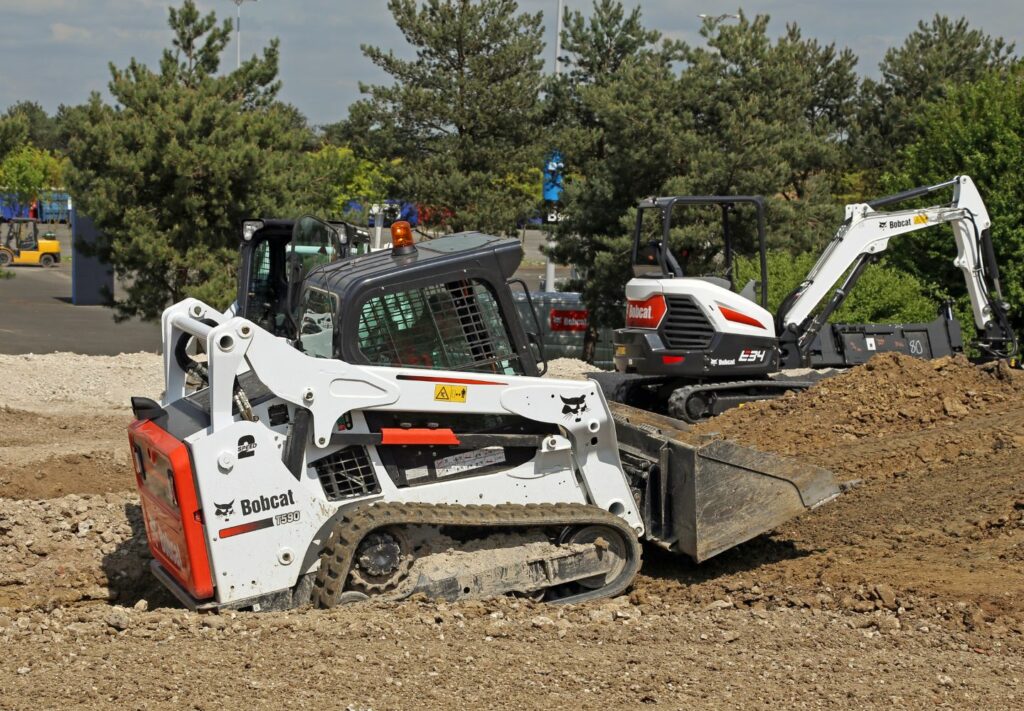Compact Track Loader (CTL) Rubber Track Maintenance Tips

Compact track loaders, as some of the most adaptable machines on a job site, require particular attention to their rubber track undercarriages. Contractors should prioritise training equipment operators on proper operation and cleanliness to enhance equipment longevity, ensuring they get the most value from their investment. It’s well known that a machine’s performance hinges on proper maintenance. This is the foundation for increased uptime and the best way to maximise return on investment. Like all mechanical parts, CTL rubber tracks wear out over time, and improper maintenance can result in the need for costly repairs and downtime. Closely monitoring equipment is crucial to avoid potential issues, and by dedicating time to implementing essential maintenance steps, contractors can significantly extend the life of their machines. This not only minimises the chance of machine failure, but also saves money on service and replacement costs, making the most of the machines’ versatility.
Signs of Rubber Track Wear
Becoming familiar with the signs of rubber track wear is essential if you want to extend the life of your compact track loader. The following are signs you may need to consider a replacement or seek out a rubber track repair specialist:
- Cracks or splits in the rubber tracks
- Wear on the lugs or tread bars
- Uneven wear
- Reduced traction or slipping
- Increased vibration or shaking while operating the equipment
- Deformation or flattening of the tracks
- Increased noise
- Excessive track movement or bouncing
- Visible signs of tearing or fraying
- Reduced overall performance and efficiency
How to Maintain CTL Rubber Tracks
Follow Proper Operation Techniques
One of the most significant contributors to premature undercarriage wear is improper operation. Movements such as counter-rotations, sharp changes of direction, and spinning on abrasive surfaces can cause cuts and material buildup on the outer edges of the tracks, which can damage the track and its components.
Operators should use three-point turns instead of counter-rotations and avoid spinning the tracks. Jobs involving more abrasive materials usually cause extra wear, therefore it’s essential to understand the type of applications the CTLs are being used for and how this affects their lifespan.
Clean Tracks Regularly
Aside from proper operation, cleaning the CTLs’ undercarriage regularly is crucial for prolonging the lifespan of your compact track loader tracks. How often you clean depends on factors such as the type of application and material. However, it is recommended that operators remove any materials like mud, clay, and gravel, as often as possible to limit wear to the undercarriage components. Pay particular attention to cleaning around the front and rear roller wheels, as this is the area where material can accumulate most easily. A good rule of thumb is to clean daily and use a pressure washer, if available, or a small shovel or similar tool.
Thoroughly Inspect Your Tracks
To get the most out of a CTL’s rubber track undercarriage, it’s important to inspect them regularly. Check the tension and general condition of the tracks daily, including checks for any damage. The track tension should match what is listed in the equipment manual. This is a particularly important part of track maintenance, as loose tracks can result in ratcheting, or lugs skipping over sprocket rollers, which accelerates damage and increases the risk of derailment. On the other hand, tracks that are too tight can also accelerate wear on components such as bearings, wheels, and sprockets.
When inspecting your tracks, examine the outside area for damage, and check for deep cuts that dig into the core of the track. Large cuts may continue to worsen and call for replacement rubber tracks. You can also inspect the drive lugs, and ensure that they still fit well with the sprocket rollers. A track will soon become unusable if the lugs are worn down so far that they continually skip over rollers when the track is properly tensioned.
When to Replace CTL Tracks
It’s important to always use high-quality rubber tracks made from high-grade rubber compounds for long-lasting track usage. However, if your tracks do exhibit any signs of significant wear and tear, it’s best to get them replaced.
Tradefaire International stocks a range of premium replacement rubber tracks for excavators and other machines, including Bobcat rubber tracks and Caterpillar rubber tracks. We are recognised as the leading supplier of tracks, and are here to service any of your track or tyre-related needs. Whether it’s replacement rubber tracks for skid steers, excavators, or any other equipment you need, we’re here to help. Simply get in touch by calling 1300 915 078 or filling out our online contact form.
